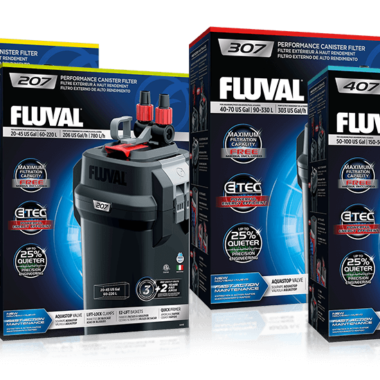CO2 is a game-changer for anyone serious about maintaining a thriving planted aquarium. Just like plants on land, aquatic plants require carbon dioxide (CO2) to perform photosynthesis, which converts light into energy. In a planted tank, especially one densely packed with various species, the natural levels of CO2 in the water are often insufficient to sustain robust plant growth. This is where CO2 injection systems come into play, offering a vital boost for plant health and vibrancy.
In this blog, we’ll explore the benefits of CO2 in planted aquariums, how to properly use it, and why mastering CO2 levels can lead to a thriving aquascape.

Why CO2 is Essential in a Planted Aquarium
- Enhanced Plant Growth
The primary benefit of adding CO2 to your planted aquarium is that it greatly accelerates plant growth. Aquatic plants absorb CO2 and convert it into oxygen through photosynthesis. Without enough CO2, plants will struggle to grow, becoming weak, discolored, or even dying off. Adding CO2 allows plants to absorb more light, leading to faster and healthier growth. This is especially important in high-light tanks, where plants need more CO2 to keep up with the increased energy demands. - Improved Aesthetics
CO2-enriched aquariums often boast lush, vibrant plant life. Plants with adequate CO2 have stronger stems, fuller leaves, and brighter colors. Aquascapes with CO2 systems have the potential to look more polished, natural, and aesthetically pleasing, making them ideal for both hobbyists and competition-level aquascaping. - Balanced Ecosystem
When plants are growing well due to sufficient CO2 levels, they produce oxygen, which benefits the overall ecosystem. Higher oxygen levels support fish, shrimp, and beneficial bacteria, creating a balanced and thriving aquatic environment. - Algae Control
Inadequate CO2 levels can lead to imbalanced nutrients, which often results in unwanted algae growth. Algae thrive in environments where plant growth is poor, as they outcompete the plants for available nutrients. A healthy balance of CO2, along with proper lighting and fertilization, helps plants outgrow algae, keeping it in check
How to Get CO2 Right in Your Planted Aquarium
While CO2 provides clear benefits, it’s crucial to manage it correctly. Here are the key factors to consider when setting up and maintaining CO2 in your planted tank:
1. CO2 Injection Methods
There are several methods for adding CO2 to an aquarium, each with varying levels of efficiency and complexity:
- Pressurized CO2 Systems:
These systems are the most reliable and effective way to add CO2 to a planted aquarium. A pressurized system includes a CO2 cylinder, regulator, diffuser, and bubble counter. This allows precise control of CO2 levels and is ideal for larger or heavily planted tanks. - DIY CO2 Systems:
For hobbyists on a budget, DIY CO2 systems using yeast fermentation are an option. However, these systems are difficult to control and usually not sufficient for larger or high-light tanks. - Liquid Carbon Supplements:
Products like liquid carbon (glutaraldehyde) can provide a temporary boost of carbon for plants, but it’s not a long-term replacement for CO2 injection. This method works best for low-tech tanks or as a supplement to pressurized systems.

2. CO2 Levels and Monitoring
Getting CO2 levels right is essential to avoid harming your fish while optimizing plant growth. The recommended CO2 concentration for a planted aquarium is around 20-30 ppm (parts per million). To measure CO2 levels, you can use:
- Drop Checkers:
A simple drop checker changes color based on CO2 concentration, providing a visual cue for whether your CO2 is too low, too high, or just right. - pH and KH Testing:
The pH (acidity) and KH (carbonate hardness) of your water can also indicate CO2 levels. As CO2 dissolves in water, it lowers the pH, and with a known KH, you can calculate your CO2 levels using a pH-KH CO2 chart.

3. Balancing Light, CO2, and Fertilizers
CO2 doesn’t work in isolation. To achieve optimal plant growth, it’s essential to balance CO2 with light and fertilization. More light means plants will require more CO2, so it’s important to adjust CO2 levels to match your lighting intensity. Additionally, plants need a steady supply of nutrients, including macronutrients (nitrogen, phosphorus, potassium) and micronutrients (iron, magnesium, and others), to thrive alongside CO2. Use high-quality fertilizers, like Masterline or Aqua Vascular, to provide the necessary nutrients.






4. Timing CO2 Injection
To maximize efficiency, CO2 injection should coincide with the aquarium’s light cycle. Set your CO2 to turn on one hour before the lights and turn off one hour before the lights go off. This ensures that plants have sufficient CO2 available when they are photosynthesizing and prevents waste during dark periods when CO2 isn’t needed.
5. Preventing CO2 Overdose
Overdosing CO2 can lead to dangerous drops in pH and deplete oxygen, harming or even killing fish. Always start with a lower CO2 dose and increase slowly while monitoring the tank’s inhabitants. Fish gasping for air near the surface is a clear sign of CO2 overdose, so immediate corrective measures should be taken.
Conclusion
CO2 is a critical component for creating a lush and healthy planted aquarium. From enhanced plant growth to improved aesthetics and algae control, the benefits of CO2 are vast. However, proper CO2 management is crucial. By choosing the right injection system, maintaining balanced CO2 levels, and synchronizing CO2 with your lighting and nutrient regimen, you can unlock the full potential of your planted aquarium and create a vibrant, thriving aquascape.
With the right approach, mastering CO2 in your planted aquarium can transform your tank into an underwater paradise!
Join our WhatsApp channel to get more updates
Our Tamil YouTube channel
Our recent works and Projects











